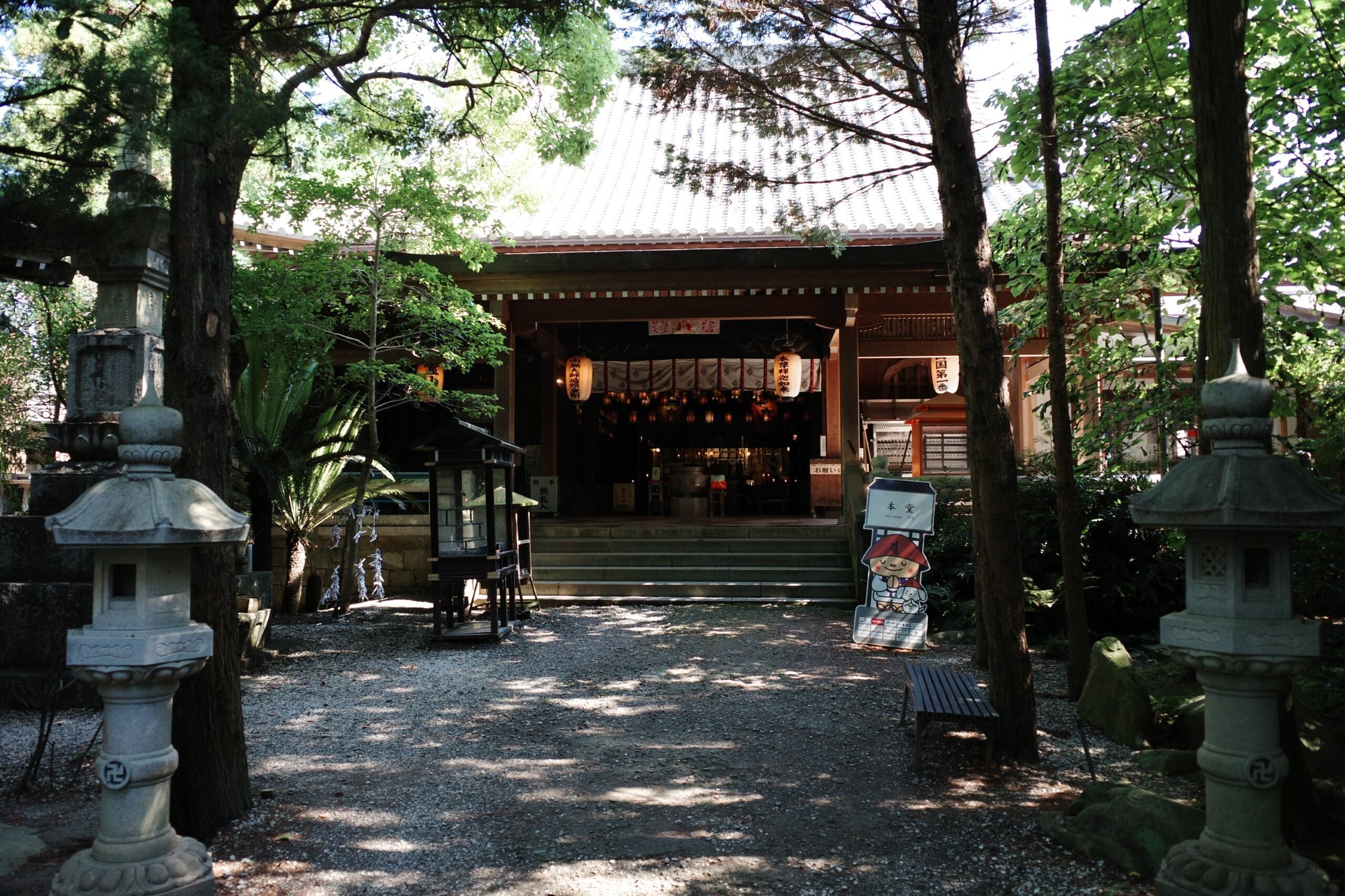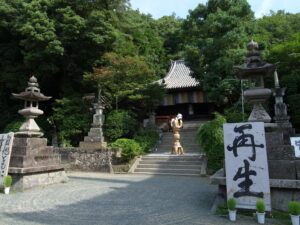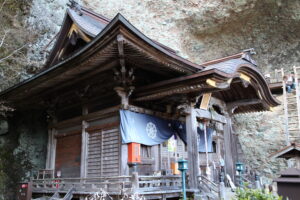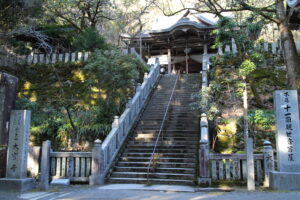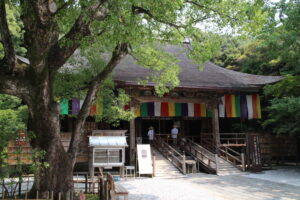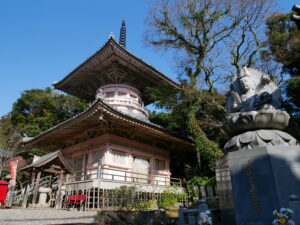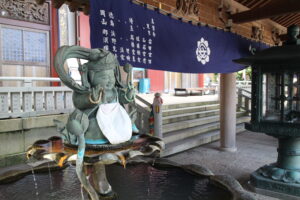Located in Naruto, Tokushima, Ryozen-ji’s imposing temple gate marks the beginning of the Shikoku Henro. A newer tradition also sees many pilgrims returning to Ryozen-ji to offer thanks on the completion of their journey—a place to “close the circle” of this transformative pilgrimage.
Ryozen-ji’s Origins and History
Ryozen-ji’s history stretches back even further than Buddhism’s presence in Japan. Mt. Oasa, a peak about 2 kilometers north of the temple, has been venerated since ancient times as a sacred site of the indigenous deity Ame-no-hiwashi-no-mikoto, “The Heavenly SunEagle Deity.” When Buddhism came to Japan, locals noticed the similarity between the name of this deity and Vulture Peak (Gridhrakūṭa) in Rajgir, where the Buddha is said to have often taught.
Legend has it that Kukai vowed to open the 88temple pilgrimage here in 815 and gave the temple its name Ryozenji or “Temple of the Sacred Peak,” making the nearby Mt. Oasa a sacred reflection of the Indian holy mountain. The temple grounds originally included the large Oasahiko Shrine and Mt. Oasa itself, but these were separated in the 19th century as part of the Meiji government’s project to establish Shinto as the state religion. Even so, the temple and shrine remain a living example of the multilayered relationship between prehistoric mountain veneration, Shinto, and Buddhism.

What to See at Ryozen-ji
Passing through the temple’s gate, the noise of the busy street outside dissolves into the sound of running water, the breeze rustling the leaves of the evergreen trees that dot the grounds, the smell of incense, and the prayers of pilgrims creating an atmosphere of serenity and reflection. Across from a koi pond full of vibrantly colored fish is an impressive 17th-century pagoda. Walking into the inner part of the temple brings you to the main hall, built at the same time as the pagoda. Its interior is beautifully decorated with metal lanterns and a painting of a dragon on the ceiling, as well as an array of gorgeous statues and images, each packed with deep meaning.
The temple’s hall to Kobo Daishi can be found on the other side of the koi pond. As the first pilgrimage temple, Ryozen-ji is a popular place to stock up on pilgrimage gear and supplies, which can be found in the temple shop beside the parking lot outside.
You can learn more about this historical separation of Buddhism and Shinto at Japan’s Agency for Cultural Affairs.
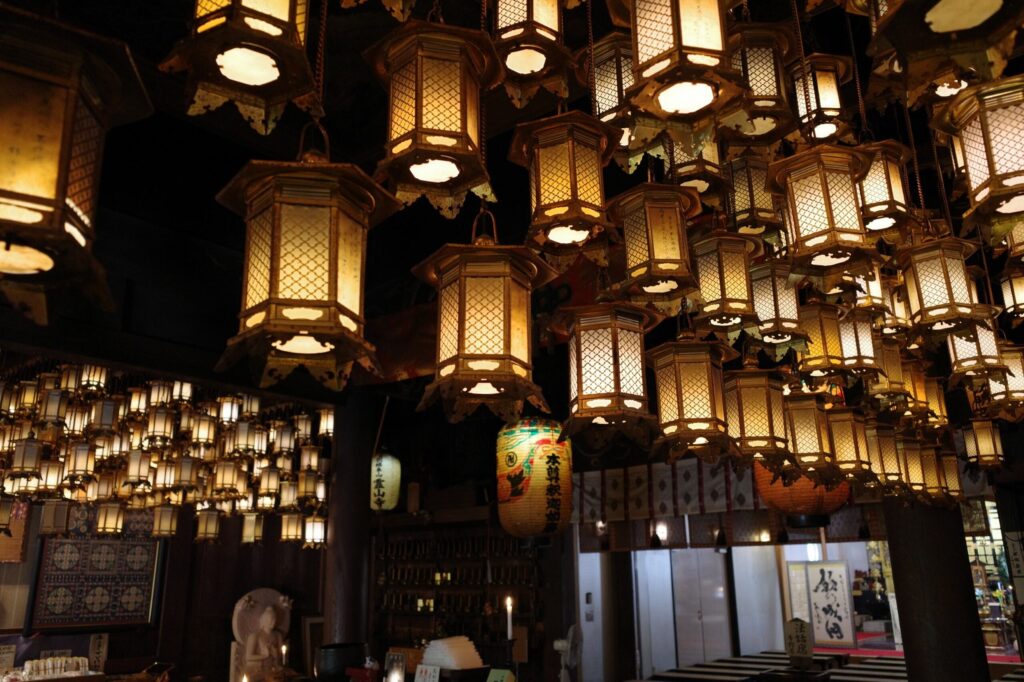
Plan Your Shikoku Pilgrimage with Shikoku Tours
Begin your sacred journey at Ryozen-ji with Shikoku Tours, your trusted partner for customized Shikoku Henro pilgrimage experiences. Whether you walk, cycle, or travel by private car, we ensure your pilgrimage is smooth, meaningful, and tailored to your needs. Contact us today to start planning your unforgettable pilgrimage beginning at Temple 1, Ryozen-ji.
Naruto is also home to world-famous whirlpools, charming performing arts traditions, and incredible traditional crafts. Discover more about Naruto on the official Tokushima Prefecture tourism website.

